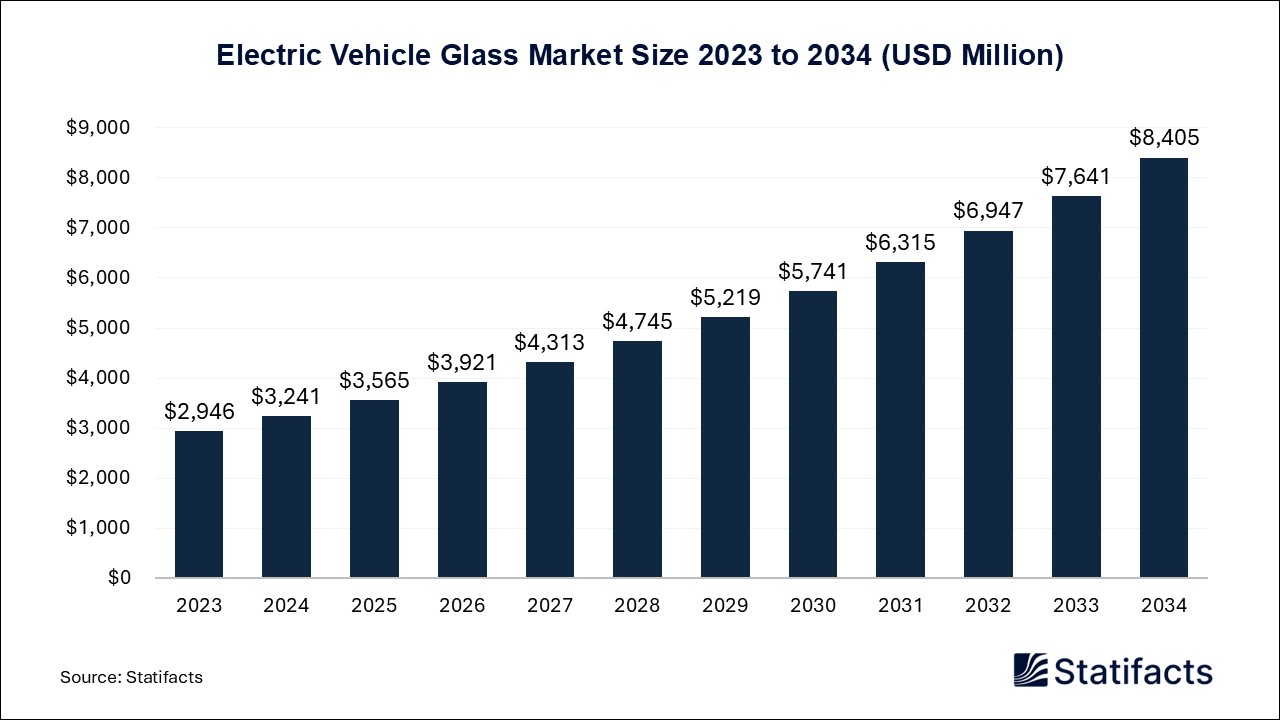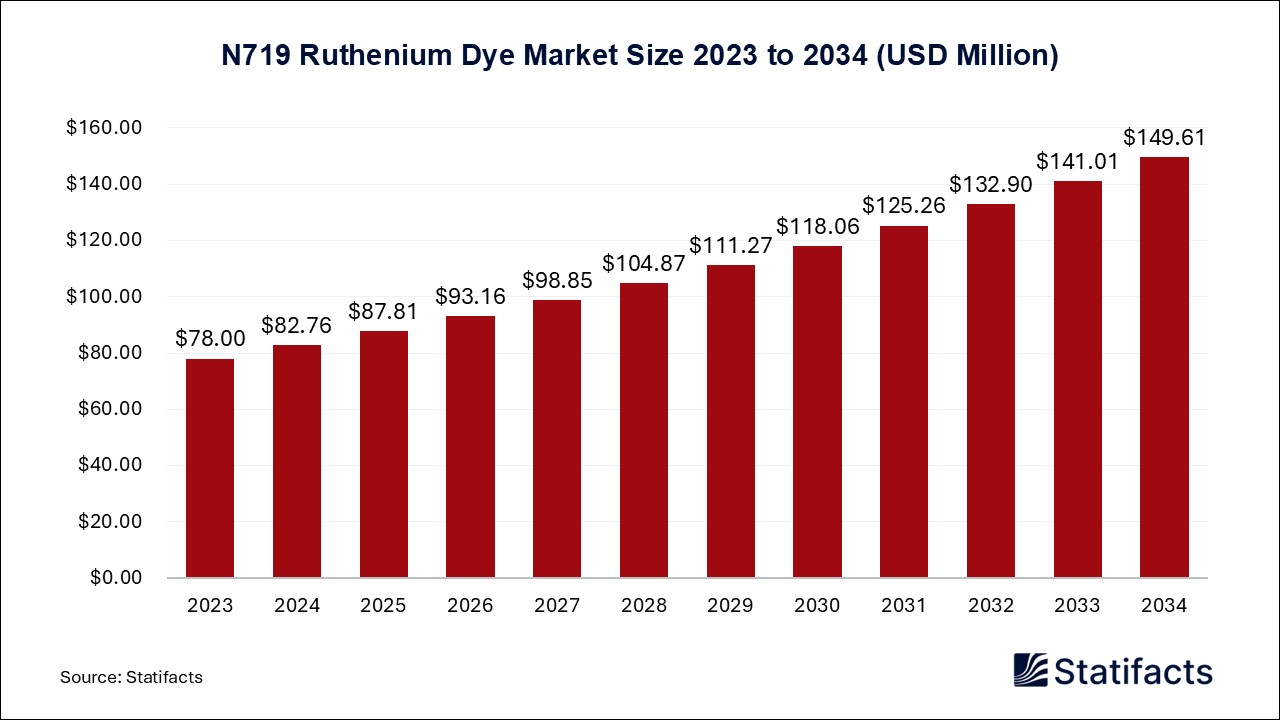Last Updated: 15 Jul 2025
Source: Statifacts
By clicking “Accept All Cookies” you agree to the storing of cookies on your device to enhance site navigation, analyze site usage, and assist in our marketing efforts.
Privacy PolicyU.S. Medical Device Manufacturers Market (By End Use: Small-Sized Enterprises, Mid-Sized Enterprises, Large Multinational Companies) Industry Size, Share, Growth, Trends 2025 to 2034.
The US medical device manufacturers market size was estimated at USD 17.07 billion in 2024 and is projected to be worth around USD 60.77 billion by 2034, growing at a CAGR of 13.53% from 2025 to 2034. A severe growth rate prevails in the medical devices manufacturers market due to the aging global population, technological advancements, and an increasing occurrence of chronic conditions such as diabetes, cardiovascular diseases, and cancer.
| Industry Worth | Details |
| Market Size in 2025 | USD 19.46 Billion |
| Market Size by 2034 | USD 60.77 Billion |
| Market Growth Rate from 2025 to 2034 | CAGR of 13.53% |
The U.S. medical device manufacturers market is a rapidly evolving industry that comprises several products for the diagnosis, monitoring, prevention, and treatment of medical conditions. Having an aging population, the prevalence of chronic illness, and advances in medical technology are the factors driving this market. Aging puts a higher demand on medical intervention. These chronic illnesses, such as diabetes and cardiovascular disorders, require some form of continuous monitoring or treatment. Technological innovation is paramount to helping transform patient care-from AI technologies to wearable devices. Contract manufacturing outsourcing trends help companies rationalize production and direct their resources toward innovations. Yet, adhering to the complex regulatory mandates is the challenge, with compliance becoming rigorous and investment in R&D becoming sustained.
The U.S. medical device manufacturers' market has experienced a significant transformation under the influence of AI, with improvements in efficiency, quality, and innovation. AI robots work on repetitive tasks with high precision to increase throughput and reduce cycle times. AI analyzes sensor data to optimize workflows and perform predictive maintenance so that downtime is minimized and productivity is maximized. Active defect detection is done via AI-based systems to avoid intermittent processes and human errors in the designation. Through production, data are analyzed by AI, which allows manufacturers to maintain standards and take proactive steps to mitigate defects. Cost savings come from AI techniques by minimizing wastage of materials and rework, along with recalls. Agile manufacturing systems powered by AI permit a quick response to market demands and radiation of new products.
The major market drivers in the U.S. medical device manufacturers market are an aging population, increased prevalence of chronic diseases, and technological advancements. Demand is also generated for devices concerning age-related health issues, digital health tools, and equipment for minimally invasive surgery. The preference for minimally invasive procedures accelerates device adoption. On the other hand, increased outsourcing of activities by manufacturers has enabled streamlined operations and even innovation, leading to developments indubitably contributing to the market growth.
The growth of the U.S. medical device manufacturers market is restrained by factors such as high costs associated with research and development, stringent regulatory guidelines, and uncertainty in reimbursement policies.
Stringent regulatory guidelines
In the U.S., medical devices face difficulty primarily due to their complex and stringent regulatory framework, especially under FDA oversight. Classified medical devices face more rigorous pre-market requirements, which lengthen the development timelines and elevate the R&D costs. Manufacturers have to meet post-market surveillance requirements and must file reports for adverse events and comply with quality systems regulations, each of which represents a potential ground for delay of product launch and mounts further to the overall cost burden. The lack of certitude as regards the reimbursement policies adopted by insurers and public healthcare programs adds to the dilemma, placing manufacturers in an awkward situation with regard to estimating returns on investment. These elements can act against innovation and slow down the entrance of new technologies into the market. Cybersecurity concerns
With the unexplained rapid growth in the implementation of connected medical devices into everyday use in the United States, anxiety over cybersecurity has skyrocketed. Medical devices face vulnerabilities when it comes to cyber threats such as theft of data, ransomware attacks, and unauthorized access, to name a few. Such breaches compromise patient safety and violate data privacy, and cause huge monetary losses and great damage to the reputation of a manufacturer. To ensure that risk does not happen, companies must heavily invest in cybersecurity measures, together with practices of secure software design, encryption protocols, real-time threat detection, and constant software updates. This results in more development costs and requires specialized expertise, and modification for monitoring during the whole life span of the product. Federal regulatory agencies, such as the FDA, came up with cybersecurity compliance guidance, further complicating the matter.
The opportunities in the U.S. medical device manufacturers market are associated with technological advancements and a favorable regulatory environment.
Technological advancements
Technological innovations in the U.S. medical device market are shaping the design, manufacturing, and use of medical devices. AI-based diagnostic techniques improve the accuracy of disease diagnosis, whereas robotic-assisted surgeries grant much precision and allow minimally invasive procedures. Further, an IoT interface facilitates real-time remote monitoring of patients, thereby enhancing chronic disease management and hospital reduction. 3D printing and wearable health applications, on the other hand, make the issuance of personalized and cost-effective medical solutions possible. These technologies, thus, enhance clinical efficiency while opening paths for business models and revenues. Hence, manufacturers must stay ahead of innovation to gain a competitive advantage and cater to the resultant needs of patients and health. Outsourcing opportunities
The outsourcing trend in the U.S. medical device market is a growing one, given regulatory complexities, cost pressures, time-to-market issues, and demand for all four. Manufacturers increasingly collaborate with third-party service providers at various stages of product development-associated research, design, prototyping, manufacturing, packaging, regulatory consultancy, etc. Therefore, companies may concentrate on the actual innovation and brand-building advantages while saving opportunities for efficiency, scaling, or technical aptitude from third parties. Outsourcing-the need to invest huge capital and expenses in operational matters-has stood attractive for smaller and mid-sized businesses. However, as medical devices become harder and lifecycle timelines shorter, outsourcing becomes the best means for manufacturers to keep up with changing market dynamics.
“With its compatibility with Mako SmartRobotics and design based on SOMA technology, Insignia delivers a truly personalized approach to hip replacement through patient-specific fit, function, and flexibility, allowing surgeons to improve patient outcomes.”
“With over 30 years of experience, MeKo has evolved into a highly specialized provider of medical components, including stents, heart valve frames, and other high-precision implants. The new U.S. location enables MeKo to provide local and immediate support to its American partners throughout all stages of the product lifecycle — from initial design and prototyping to full-scale production and optimization.”
The small enterprises segment led the U.S. medical device manufacturers market, due to the very nature of nimbleness and innovation, coupled with that niche character. Areas such as digital health, wearable technology, and minimally invasive surgical devices are under development by these manufacturers while offering high-tech solutions. Being small means that such companies can rapidly respond to emerging trends and shifts in the landscape of healthcare. Venture capitalists actively foster them, essentially propelling innovation and reducing healthcare costs. Small manufacturers stimulate job creation and foster regional growth, mostly in tech and healthcare-focused areas. Multinational giants usually help or buy these innovators in pursuit of technologies to build faster into new products.
The large multinational companies segment is expected to experience the fastest rate of growth from 2025 to 2034. With immense economies of scale, wide global distribution networks, and high R&D funding, they can be able to create next-generation technologies such as robotic surgery systems, implantable devices, and AI-based diagnostic tools. Their financial clout and infrastructure help them get fast commercial expansion from affiliation or acquisition. Their internal regulatory experience helps in direct navigation of FDA approval processes, preventing delay in putting the newest products on the market. A brand reputation in place helps them in de-risking device acceptance from healthcare providers and patients.
They also strategically outsource manufacturing and regulatory services to increase operational efficiencies.
The market is moderately fragmented with local players like Stryker, etc., wishing to take the time to edge their presence through investments, partnerships, acquisitions, and mergers. They also invest in product development and competitive pricing. These strategies will promote market growth and lucrative opportunities for market players
Stryker's recent annual revenue for the year ending December 31, 2024, was $22.6 billion, a 10.2% increase compared to the previous year.
In the year 2025, Medtronic reported total revenue of $33.537 billion, with adjusted revenue of $33.627 billion.
Johnson & Johnson's annual revenue for 2024 was $88.82 billion, a 4.3% increase from the $85.159 billion reported in 2023.
| Segments | Shares (%) |
| Small‑Sized Enterprises | 28% |
| Mid‑Sized Enterprises | 42% |
| Large Multinational Companies | 30% |
Published by Kesiya Chacko
| End Use | 2024 | 2025 | 2026 | 2027 | 2028 | 2029 | 2030 | 2031 | 2032 | 2033 | 2034 |
|---|---|---|---|---|---|---|---|---|---|---|---|
| Small-Sized Enterprises | 4.78 | 5.37 | 6.03 | 6.77 | 7.61 | 8.54 | 9.59 | 10.79 | 12.17 | 13.75 | 15.58 |
| Mid-Sized Enterprises | 7.17 | 8.10 | 9.15 | 10.34 | 11.70 | 13.21 | 14.94 | 16.93 | 19.20 | 21.84 | 24.93 |
| Large Multinational Companies | 5.12 | 5.91 | 6.82 | 7.87 | 9.07 | 10.48 | 12.09 | 13.95 | 16.16 | 18.78 | 21.82 |
Last Updated: 15 Jul 2025
Source: Statifacts
| Subsegment | 2024 | 2025 | 2026 | 2027 | 2028 | 2029 | 2030 | 2031 | 2032 | 2033 | 2034 |
|---|---|---|---|---|---|---|---|---|---|---|---|
| Small-Sized Enterprises | 4.78 | 5.37 | 6.03 | 6.77 | 7.61 | 8.54 | 9.59 | 10.79 | 12.17 | 13.75 | 15.58 |
| Mid-Sized Enterprises | 7.17 | 8.10 | 9.15 | 10.34 | 11.70 | 13.21 | 14.94 | 16.93 | 19.20 | 21.84 | 24.93 |
| Large Multinational Companies | 5.12 | 5.91 | 6.82 | 7.87 | 9.07 | 10.48 | 12.09 | 13.95 | 16.16 | 18.78 | 21.82 |
Key drivers include an aging population, increasing prevalence of chronic diseases, advancements in medical technologies, and rising demand for home-based healthcare solutions.
The U.S. manufactures a wide range of devices, including diagnostic imaging systems, surgical instruments, cardiovascular devices, orthopedic implants, and wearable health monitors.
Hospitals, clinics, ambulatory surgical centers, and home healthcare providers are the main end users, along with export markets benefiting from U.S. quality standards.
Trends include the adoption of AI and IoT in devices, miniaturization, 3D printing, and increased investment in wearable and remote monitoring technologies.
Regulatory compliance with FDA standards, high R&D costs, supply chain disruptions, and increasing pressure to reduce production costs are major challenges in the sector.
To get full access to our Market Insights, you need a Professional Account or a Business Suite.

You will receive an email from our Business Development Manager. Please be sure to check your SPAM/JUNK folder too.

You will receive an email from our Business Development Manager. Please be sure to check your SPAM/JUNK folder too.

Our customers work more efficiently and benefit from



